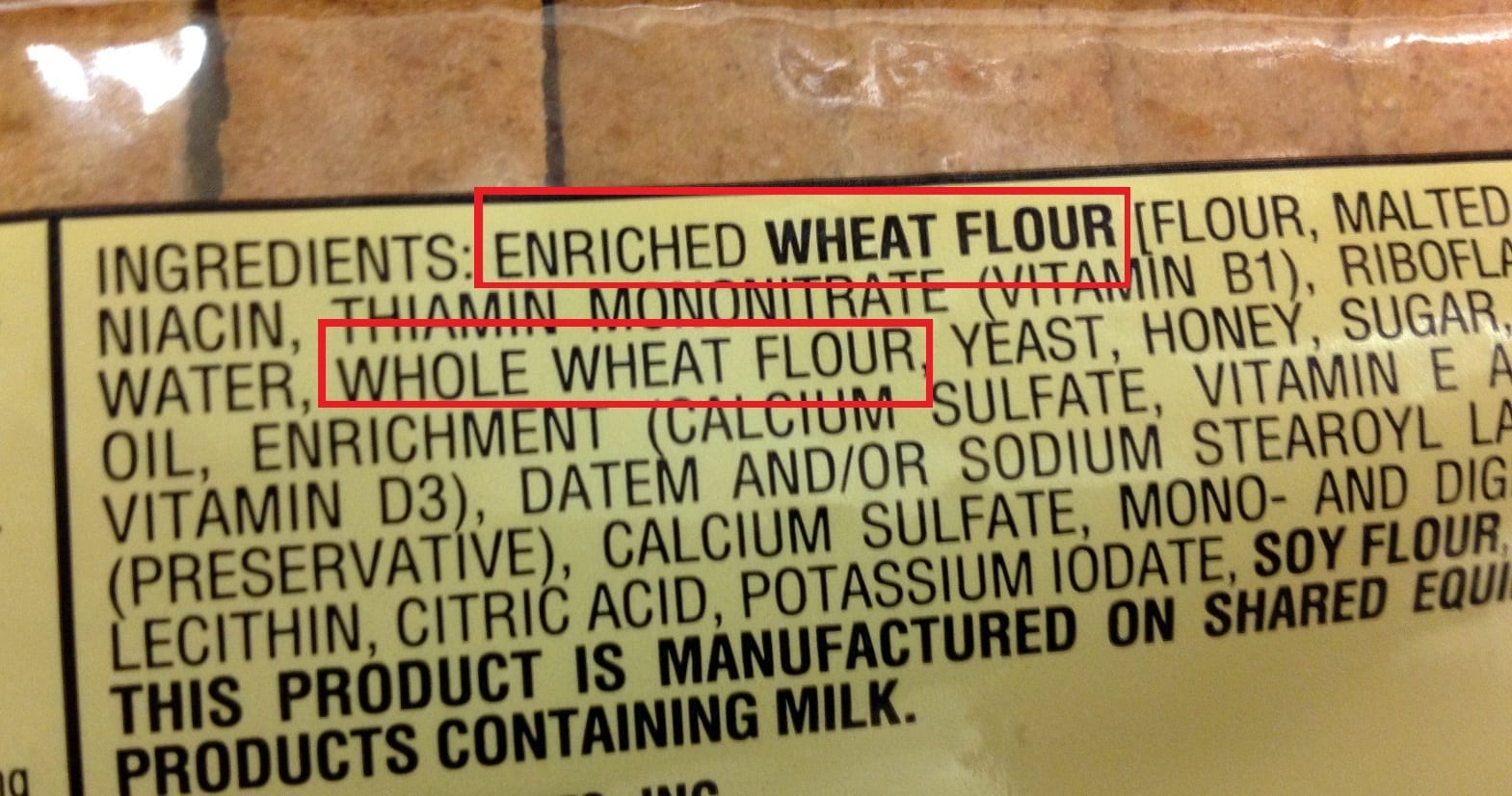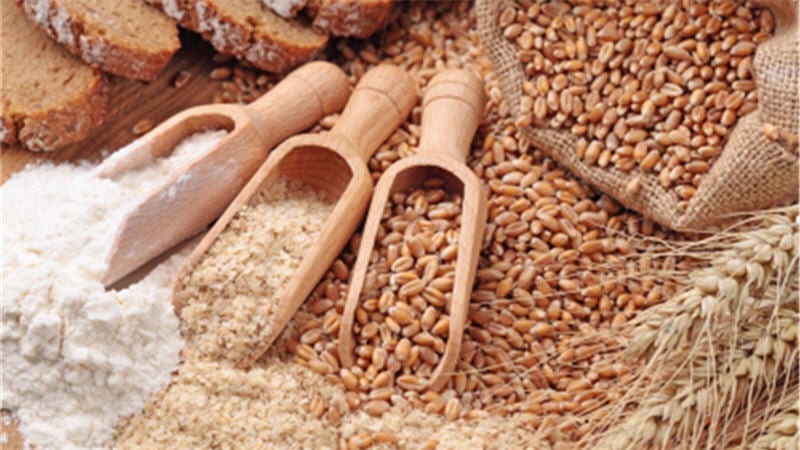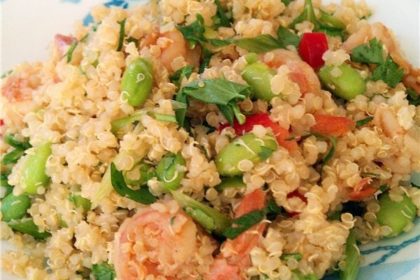UPDATE: Following an eating plan that centers around whole-grain foods versus refined grains can help you reduce belly fat and other health risks. See Eat Your Way to a Trimmer Waist. But shopping for whole grains can be confusing with all the varying descriptors. So here’s a guide to help you decipher what’s whole grain and what’s not.
To qualify as a whole grain, 100% of the original kernel – all of the bran, germ, and endosperm – must be present. All grains start out whole, but during the refining process, the bran and germ are removed. As a general rule, look for the key word “whole”, such as “whole grain”, “100% whole grain”, or “whole wheat” when shopping for a whole-grain product and see that it’s listed as the first ingredient on the food label.

Watch for These Words
Beware of the following product ingredient descriptions as they MAY NOT be whole grain:
- Wheat
- Wheat flour
- Durum wheat
- Semolina
- Stoneground
- Organic flour
- Multigrain – May be a mix of whole grains or several refined grains or a mix of both. Healthy-sounding names like “nine-grain” bread does not necessarily mean that it’s whole grain.
These words NEVER describe a whole grain:
- Enriched flour
- Degerminated (on corn meal)
- Bran
- Wheat germ
Don’t judge a food by its color. Just because a bread, for example, is brown and contains the word “wheat” in the name, does not mean it’s a whole grain.
Always Whole Grain
Put the following on your shopping list and look for them on your food labels. These grains are invariably whole grain without being preceded by the word “whole”:
- Amaranth
- Buckwheat
- Bulgur (cracked wheat)
- Popcorn
- Millet
- Oats, oatmeal – Including steel-cut oats, old-fashioned oatmeal, instant oatmeal (choose the plain, unsweetened variety)
- Quinoa
- Sorghum (milo)
- Triticale
- Rice (brown, wild, and colored, such as red or black rice)
When to Look for “Whole”
Beware… just because you’re eating rye bread instead of white doesn’t necessarily mean it’s better. For the following, you need to look for the word “whole” to be sure you’re getting a whole grain.
- Barley – “whole barley”, “hulled barley” or “hull-less barley”
- Corn – “whole corn” (avoid “degerminated”)
- Cornmeal – “whole corn” or “whole grain corn” (avoid “degermed corn”)
- Rye – “whole rye” or “rye berries”
- Spelt – “whole spelt”
- Wheat – “whole wheat”
Fiber Content in Whole Grains
All whole grains are not created equal. That is, fiber content varies widely. For example, whole barley is 17.3% fiber and contains 2.8 g fiber per 16 g (about 1.5 tablespoons). Brown rice, on the other hand, is 3.5% fiber and contains 0.6 g fiber per 16 g. So, just because a food isn’t high in fiber doesn’t necessarily mean it’s not whole grain.
![]() Karen’s Fit Tip: As you can see, eating whole grains is not limited to just whole wheat, oatmeal and brown rice. Be adventurous and try something different every week!
Karen’s Fit Tip: As you can see, eating whole grains is not limited to just whole wheat, oatmeal and brown rice. Be adventurous and try something different every week!





